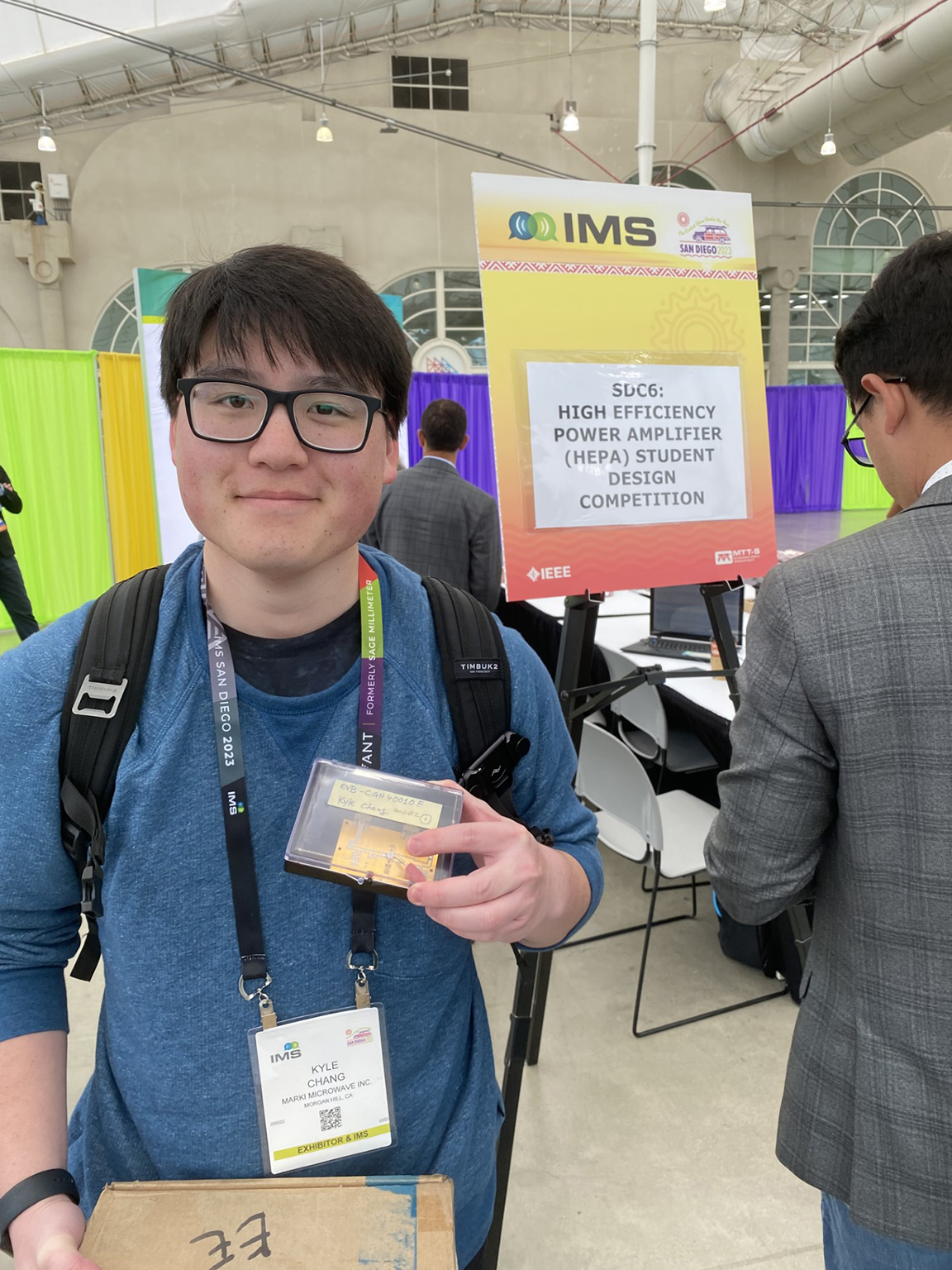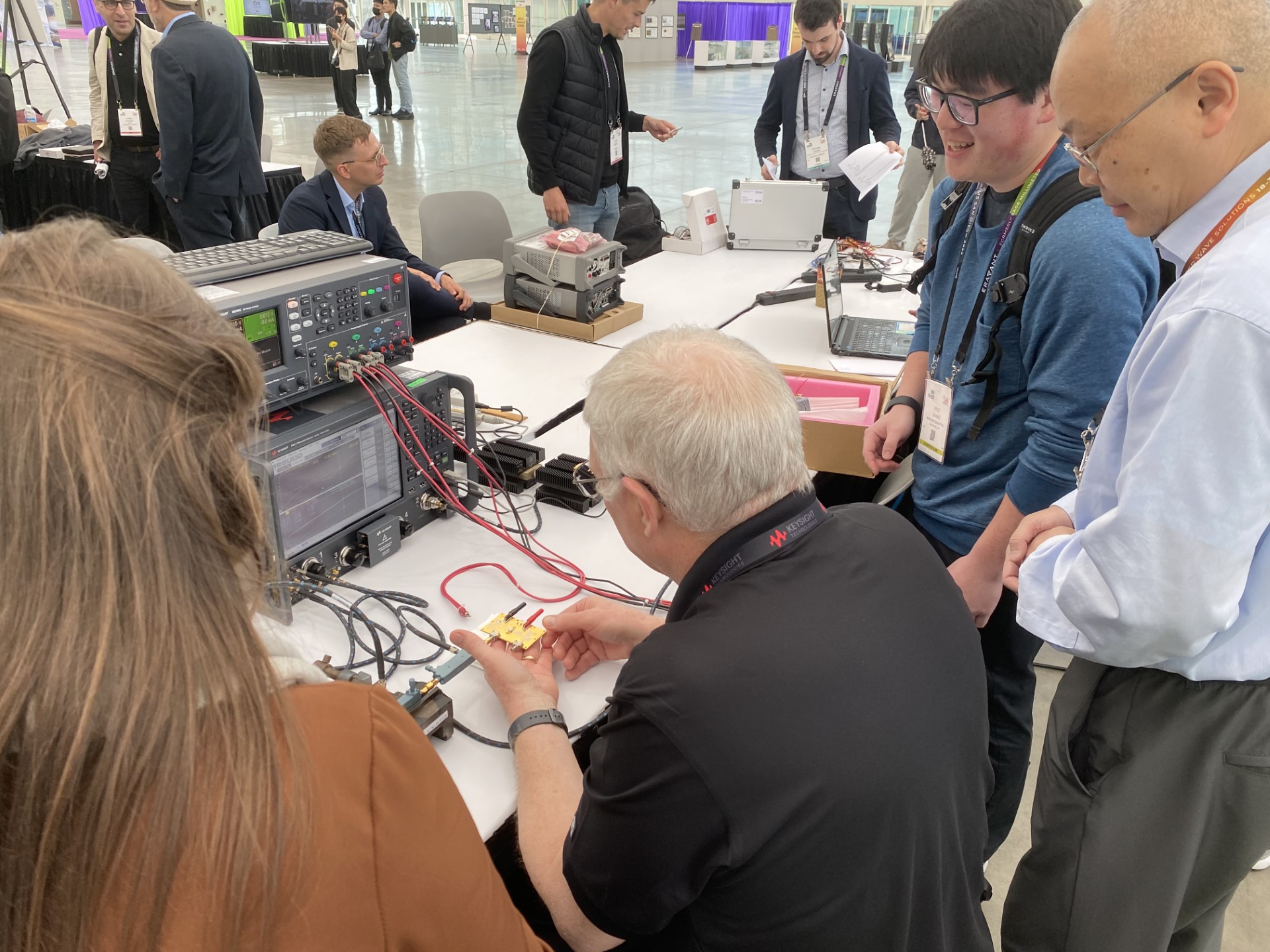Countless hours of work in the lab spanning three quarters paid off for Cal Poly electrical engineering master’s students Shreyansh Suman and Kyle Chang.
Taking on an international field of mostly doctorate students, Suman and Chang finished third at the 19th High Efficiency Power Amplifier Student Design Competition in mid-June in San Diego.
Part of the 2023 IEEE International Microwave Symposium, the competition had students building high-power amplifiers like those used in wireless communications that have both high efficiency and linearity — a measurement used to minimize signal distortion — over a relatively broad frequency band.

Suman said he was a little shocked after Cal Poly finished behind the winning team from Friedrich-Alexander-Universität Erlangen-Nürnberg, Germany, and the second-place team from University College in Dublin, Ireland.
“The bar was set really high and I didn’t expect third,” he said. “Just building an amplifier that qualified for the competition was the first goal and it was a relief when we qualified. But in San Diego, everything just seemed to line up for us.”
Chang said his biggest takeaway from the event was the diversity of solutions developed by the other college students from around the world.
“We learned how others can overcome the same problem using different approaches,” he said. “All the competitors come from different levels of experience, from seasoned amplifier design veterans to first-time designers.”

Suman, who graduated in June and will start a job as an electrical engineer at Applied Materials in August, said the hours he and Chang devoted to designing, building, testing, modifying and optimizing four prototypes was intense, but the problem-solving part of the project will always be a highlight.
“The process of debugging the prototypes in the lab allowed me to identify specific problems and essentially build the final version of the prototypes by solving these problems,” he said. “I felt inspired and energized every time I solved a problem and made progress on the project.”
Suman credited faculty adviser Dennis Derickson with helping the team with its biggest technical challenge — “getting the highest possible power-added efficiency while maintaining minus 30 dBc of linearity” — and said other challenges included planning and effective time management for designing, fabricating and testing prototypes.
“Setting up the lab, testing the power amplifier, debugging and testing again was an engaging process,” he said. “I found a state of flow that helped me stay motivated and focused. I really enjoyed getting the prototypes to work as expected — or even better than expected.”
Chang, who is employed at Marki Microwave as an applications engineer, was also engaged by the work.
“Being able to design the circuit in simulation, assemble the PC board components when they finally came back from the fabricators and run tests on the amplifiers was exciting,” he said. “It embodied the Learn by Doing spirit I came to Cal Poly for.”
By Dennis Steers


